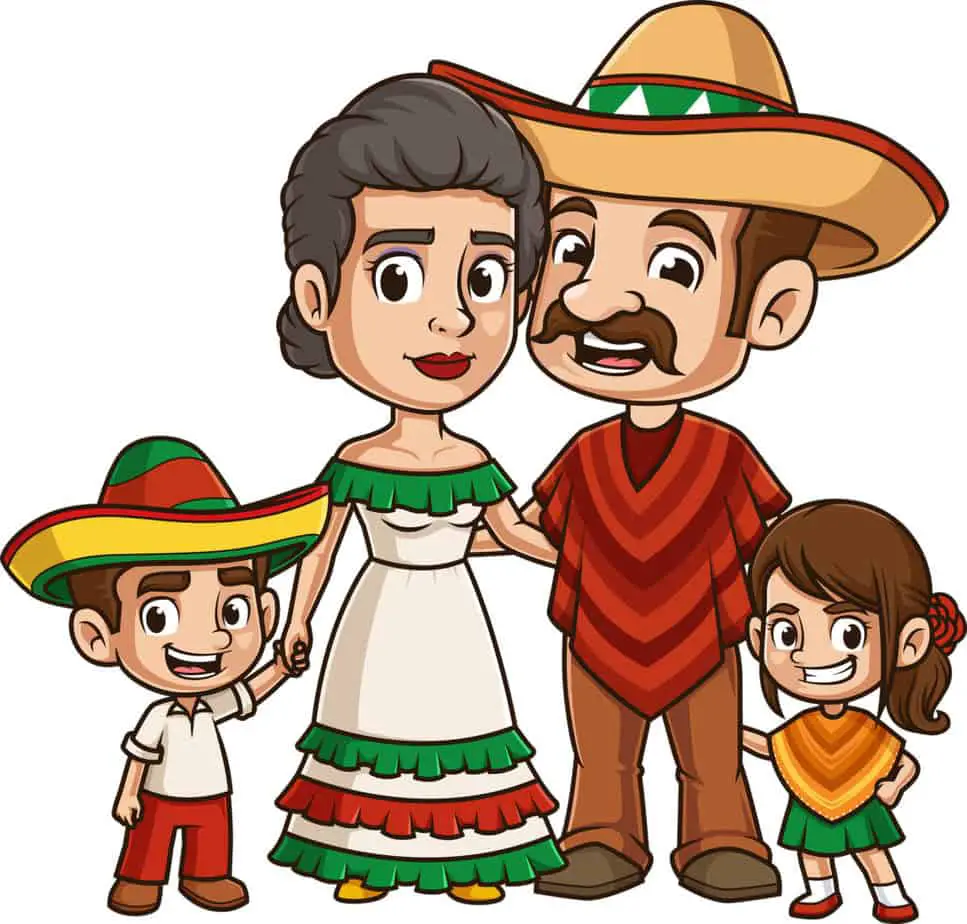
You may have heard of telenovelas before. They are a type of show series that are popular throughout the world. They are acted out in Spanish and, therefore, could be used to enhance or supplement someone trying to learn to speak Spanish.
Learn Spanish by watching telenovelas, the popular TV shows in many Spanish speaking countries. To use television or any other visual media to learn Spanish you need the right plan. This involves taking notes, following the story for meaning, and finding a Spanish speaker to answer questions.
Read on to learn about how watching telenovelas could help you on your quest to learn Spanish. You will also learn about some other effective ways you can try. Build up your fluency by trying a few different approaches.
Contents
- 1 What Are Telenovelas?
- 2 The Telenovela Method
- 3 Other Visual Media Used to Learn Spanish
- 4 Supplement Your Spanish Television Learning
- 5 The Final Talking Point on Learning Spanish By Watching TV
What Are Telenovelas?
Telenovelas are a type of television drama show. They originate in Latin America and usually portray Hispanic actors who mainly speak Spanish during the whole show. They are sometimes compared to soap operas in the U.S., but the telenovela genre differs in a few ways.
Telenovelas have a rich history, and they continue to evolve with the times. They originated in Cuba and started as radio show dramas before they hit the TV. Their plots are highly adapted for the culture, and they are marketed around the world.
Telenovelas Tell a Story

Soap Operas are ongoing storylines that take a continuous view of the lives of the characters. This means you can pop in and out of most soap operas and still be able to understand the plot, because it hasn’t really changed. But telenovelas are different in this regard.
Telenovelas tell a succinct story. The whole story is wrapped up within one season (about a year). They are sometimes compared to a novel in their story format, and each episode is one or two chapters of that novel.
They Have Different Run Times
The runtime for soap operas is indefinite, but most are during the day. Telenovelas have an elevated status, however, with their run times.
Whereas typical soap operas usually run as daytime television, this is not the case with telenovelas. Instead, telenovelas run during primetime at night as well as during the day.
They Have Different Target Audiences

Since telenovelas run at night, they are marketed for the whole family, male and female; although some may be a little mature for younger viewers.
They are also targeted toward Hispanic viewers because they are mostly spoken in Spanish.
On the other hand, soap operas are usually made with a female audience in mind and are based more on American culture, and the characters predominately speak English.
Can You Watch Telenovelas If You Do Not Speak Spanish?
With the help of subtitles, you can absolutely watch, enjoy, and understand telenovelas even if you do not speak Spanish. It is a great way to begin to be emersed in a culture different than your own. Telenovelas deal in drama, so it is easy to understand the plot lines. The stories would be interesting to most people of any culture because they mirror real-life situations – only on a grander scale.
Can You Learn Spanish While Watching Telenovelas?

If you can get used to having subtitles on your screen, then watching shows where the actors speak Spanish while viewing what they are saying in English (or your native language) on the screen can be a great way to begin to pick out words and phrases that you recognize. This type of learning is called “immersion learning.”
What is Immersion Learning?
There are many ways to go about learning how to speak Spanish. Immersion learning is very popular and effective according to most recent studies. It is used to teach languages in multiple cultures, and you could benefit from it too!
In general, immersion learning happens when you are engaged in the activity as you are learning. It could be the difference between someone telling you how to do something and someone showing you how to perform a task while you are physically doing it. I’ve addressed immersion learning here, too.
Watching Telenovelas is effective because the culture of the language you are trying to learn is apparent in the media.
If you are learning a language, the best way to do immersion learning is if you are within the culture and around the people who are consistently speaking the language you want to know. This is important because you can pick up on the social cues and phrases that you would not necessarily learn from a book.
Learning by observing is also helpful because you can see Spanish-speaking people interacting with one another. This is slightly different than if you were learning in a class where the teacher is likely the only one who is fluent.
The Telenovela Method
The Telenovela Method is a book written by Andrew Tracey and available at Amazon. In it, Tracey describes how he used immersion learning to teach himself Spanish after failed attempts of using more traditional means to learn the language.
Now the title is also used as a term referring to the process of using the media from a specific culture to learn their language.
Steps to Take to Learn Spanish from Telenovelas
Telenovelas are a fun and interesting way to start out when you are beginning to learn Spanish. Here are a few important steps you can take to learning Spanish through telenovelas.

Find a Telenovela You Are Interested In
The plot of any telenovela should always include a hefty amount of drama, but you should look for something that will hold your interest and that you will look forward to watching.
Telenovelas cover many different topics that can range anywhere from romance to mystery. Watch some previews if you can and pick one you could watch over and over. Make sure the show has subtitles in your primary language so you can follow along.
Three Telenovelas to Set Yourself Up for Success
FluentU.com is a membership-based app that you can use to learn Spanish. They take various videos and convert them into personalized learning opportunities to help you become fluent. Here are three of the telenovelas they recommend using for learning:
- “Maria la del Barrio,” which translates to “Maria of the Neighborhood”
- “Rebelde Way,” or said differently, “Rebels Way”
- “Catalina y Sabastian.” This one may seem obvious; it’s “Catalina and Sabastian”
Be Patient When You Start Watching
Native speakers talk very fast, and at first, it can be difficult to pick out the words they are saying. Try not to be too concerned with understanding every aspect of the dialog right away.
Write Down Notes

You will want to watch with subtitles from your native language at the beginning. Once you have some practice, you can also watch with Spanish subtitles and then without any subtitles for an extra challenge. Jot down notes about important parts of the plot, words or phrases you have trouble with or aspects of the culture you notice and might want to look up later.
Find a Native Speaker to Practice With
Once you begin to feel confident that you are understanding what the actors are saying, you can try imitating them to practice your annunciation.
Now that you’re more comfortable with how you are saying the words with as much of a proper accent as you can, it is a good idea to find someone who speaks Spanish to practice speaking. Then you will know whether they can understand you, and you can try having actual conversations.
Pros for Learning Through Telenovelas

Here are a few positive reasons why you might choose to learn Spanish from telenovelas.
- They keep you engaged with the content. Since telenovelas are very dramatic and are meant to draw audiences in, you will not become easily bored with your Spanish learning. Sometimes with a book and homework in front of you, it can seem very daunting. This new way of learning will keep you on your toes instead!
- Learning about the culture is better for real-life application. When you are taking a class, your Spanish teacher will most likely add in some tidbits about Latin culture. However, watching telenovelas, which are set in, created by, and performed by people with Latin roots, you will be able to pick up so much more authentic information.
- Learn at your own pace. You run the show with your learning when you are teaching yourself with this method. You can be as involved as you want. You can be thorough and diligent about looking things up and practicing, or you can just sit back and enjoy the show, learning a little more passively. No one is pushing you to be at a certain level at any time.
Cons for Learning Through Telenovelas

Although there are many good reasons, there are, of course, some hurdles to think about as well. Here are a few things to keep in mind if you choose the telenovela path:
- There aren’t any structured lessons. If you are a true beginner to the Spanish language, it might be difficult to learn with the help of telenovelas alone. You will not get any instruction about the rules of the language regarding grammar and syntax, which can be helpful to understand. If you are worried about this, try doing a little research or getting a book about Spanish before you start.
- There won’t be an instructor to help if you get stuck. If you are someone who learns well from instruction, using telenovelas may be difficult for you. There will be no one there to ask questions or to get quick answers.
- Linguistic differences between shows with different cultural backgrounds can be confusing. Telenovelas are set in and produced in many different countries. They all have specialized linguistics, and some things may not translate well. If you watch different programs from different areas, it may be confusing. Another thing to consider is that you may be learning a Spanish dialect that the people in your area do not use. This could make it difficult once you move on to the “practicing with people” stage.
Other Visual Media Used to Learn Spanish

There are other ways to learn Spanish through passively or actively watching television as well. This section will outline a few other options you may not have had at the top of your mind. It is a good idea to try out these different aspects of Spanish television. You may be able to pick up different types of information from each.
Learn With Spanish-Speaking Movies
Just like telenovelas, movies that include Spanish actors and are made in Spanish-speaking countries are a great way to stay entertained while you are immersing yourself in the Spanish language. The benefits of choosing movies instead of or on top of watching telenovelas include:
- Movies are shorter than a full Telenovela. Movies are only a couple of hours long, so you can see the whole plot unfold within one sitting.
- It is easy to rewatch movies. Because they are short, you can watch them multiple times and pick up more information each time you watch.
- You can find Spanish versions of English movies. It helps if you already know the plot and are familiar with the quotes from the movie you want to watch.
Watch Spanish News Channels
This is a fantastic way to learn about both Spanish culture and language.
A lot of the popular news channels you listen to in English also transmit their telecasts via Spanish channels. You can look up a broadcast that you regularly watch and see if they have a Spanish counterpart also.
Watch Videos Online to Learn Spanish
Besides traditional TV shows and movies, there are other audio-visual media choices you can look into as well. Online you can find informational videos of all kinds. This way, you could learn about something you are interested in while you are learning your Spanish. Plus, these videos will usually be even shorter than a feature-length movie. You can easily watch it over and over until you really understand what they are saying. Check out the following ideas to follow this form of Spanish learning.
Watch Children’s Spanish TV
Just like with Spanish children’s books and literature to learn Spanish, watching children’s programs in Spanish is a great way to support your language learning.
Children’s programming uses simplified, common vocabulary, is often repetitive, and slower in speaking.
Popular American shows in English are often available in Spanish, too.
Vlogs
“Vlogs” is short for video logs. You may have heard of blogs before; they are a type of website about a topic that someone regularly updates with a new post. A video blog (vlog) is something along the same lines, but the new posts are videos instead of articles.
Youtube is pretty popular for this style of media. You can find a ton of channels from people that speak Spanish on a variety of topics. Some are informational, some are funny, and everything in between.
Video Podcasts
A video podcast differs from a vlog because of the tone involved in both of them. A vlog is generally more conversational and is supposed to represent someone logging an aspect of their life. Video podcasts, on the other hand, generally have more structure and intent to each episode.
Although you can find video podcasts on an array of different topics as well, they are somewhat more “news” oriented and informational.
Spanish Language Education
You can find how-to and informational videos about how to learn Spanish in both vlog and video podcast formats. You can decide which is easier for you to use. Since you can get a podcast player on almost any smartphone, video podcasts are nice to use because you can download episodes for when you are on the go.
Watch Any English Movie or Show With Spanish Subtitles
This is a unique way to bolster your experience in learning Spanish. Instead of listening to Spanish while reading English subtitles to understand what the characters are saying, you can flip it and put Spanish subtitles on any English video media.
This exercise helps you to be able to see Spanish in written form. Once you understand the plot and what the characters are saying and feel confident, you can watch it in Spanish and use Spanish subtitles. This might help you pick out individual words the characters are saying as well.
Supplement Your Spanish Television Learning
You might choose to supplement your Telenovela learning strategy with some other forms of education. The following ideas can help take you to the next level. You may get somewhere with passive television watching, but you can jumpstart your experience if you add some of these tactics.
Start Out with a Spanish Partner
Having someone who will watch Spanish media with you can be very motivating. Find someone who is interested in learning to speak Spanish that has the same interests and set up a movie night, or pick which Telenovela you will start out with together.
Use Multiple Tactics
Realistically, if you want to get better at Spanish, you should employ multiple tactics. You might want to use different ones at the same time. Or you could start out by taking a class to gain a general level of foundation.
The Key is to Keep at It

Do not give up, and try not to be frustrated with yourself if you are having difficulty understanding. Remember that everyone learns at different paces, and there are a ton of different resources that you can utilize.
The Final Talking Point on Learning Spanish By Watching TV
If learning Spanish seemed like an overwhelming feat and a lot of effort before, we hope you now feel a little more excited and confident about using some of these new ideas to get you started or continue your journey!
You can use the Telenovela method to begin speaking any language, and it is a fun and immersive technique that you can get the whole family in on.
Additional Sources:
https://telenovelastudies.wordpress.com/what-is-a-telenovela/
https://carla.umn.edu/immersion/acie/vol1/Feb1998_ImmersTypes.html
https://www.cnn.com/2018/03/19/health/learn-new-language-telenovela-trick/index.html
